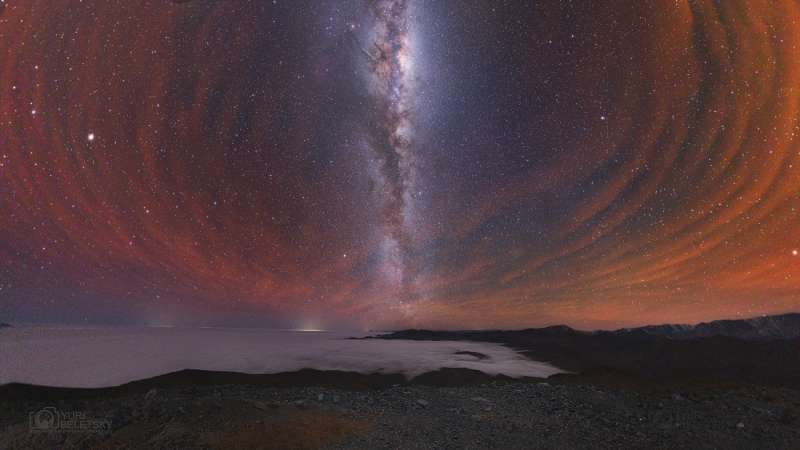Explanation: After sunset on September 1, an exceptionally intense, reddish airglow flooded this Chilean winter night skyscape. Above a sea of clouds and flanking the celestial Milky Way, the airglow seems to ripple and flow across the northern horizon in atmospheric waves. Originating at an altitude similar to aurorae, the luminous airglow is instead due to chemiluminescence, the production of light through chemical excitation. Commonly captured with a greenish tinge by sensitive digital cameras, this reddish airglow emission is from OH molecules and oxygen atoms at extremely low densities and has often been present in southern hemisphere nights during the last few years. On this night it was visible to the eye, but seen without color. Antares and the central Milky Way lie near the top, with bright star Arcturus at left. Straddling the Milky Way close to the horizon are Vega, Deneb, and Altair, known in northern nights as the stars of the Summer Triangle.
1999 2000 2001 2002 2003 2004 2005 2006 2007 2008 2009 2010 2011 2012 2013 2014 2015 2016 2017 2018 2019 2020 2021 2022 2023 2024 2025 |
Yanvar' Fevral' Mart Aprel' Mai Iyun' Iyul' Avgust Sentyabr' Oktyabr' Noyabr' Dekabr' |
NASA Web Site Statements, Warnings, and Disclaimers
NASA Official: Jay Norris. Specific rights apply.
A service of: LHEA at NASA / GSFC
& Michigan Tech. U.
|
Publikacii s klyuchevymi slovami:
atmosphere - atmosfera - atmosfernye yavleniya
Publikacii so slovami: atmosphere - atmosfera - atmosfernye yavleniya | |
Sm. takzhe:
Vse publikacii na tu zhe temu >> | |
